As residential developers eagerly cash in on the growing demand for housing in Southern Georgian Bay – offering a mix of residential types to their new home palette – municipal planners scramble to keep up with development proposals, approvals and site services. Meanwhile, some local citizens are concerned about the sustainability of what they view as rampant building activity, fearing it will impact municipal infrastructures, local traffic, the environment and the character of the communities they love.
by Marc Huminilowycz

How will increased residential development affect the character of our region? Speaking with municipal planners, the numbers look staggering. According to its target in the province’s “Places to Grow” Growth Plan for the Greater Golden Horseshoe, the population of Wasaga Beach is forecast to grow from the last census of 20,675 to 27,500 by 2031. The town’s chief planner estimates 4,377 approved residential units in its coffer, with another 1,800 projected in the coming years.
In Clearview Township, the numbers are even more dramatic, with 7,270 residential units in various stages of application, approval and construction. Doing the math (assuming 2.2 people per household) the total populations of these municipalities could increase by 13,590 and almost 16,000 respectively in the next few years.
This raises the question of sustainability. What will these increases in homes and populations mean to the character and quality of life in Southern Georgian Bay with respect to infrastructure (roads, water, sewer, etc.), traffic, the environment, services, amenities and schools? We spoke to several developers with notable projects in Southern Georgian Bay, as well as planners from all municipalities, to address some key questions that need to be asked: how municipalities are balancing housing demand with sustainability; what types of homes are being built; and how development is being managed to ensure smart growth.
Recent discussions with local planners about 2019 development activity reveal increased numbers across our region over the previous year. For example, The Town of The Blue Mountains reports issuing 320 building permits for new residential units with an estimated construction value of $181 million in 2019, compared to 201 units valued at $161 million in 2018. Owen Sound experienced a 48 per cent increase in total construction value in 2019 over the previous year. And Wasaga Beach experienced a “banner year,” with 363 new building permits issued.
Wasaga Beach
Wasaga Beach is well on its way to exceeding the population predictions of the provincial Growth Plan. Having identified several “development nodes” from east to west, the town is carefully and methodically plotting a course for a sustainable future, according to Doug Herron, manager of planning and development.
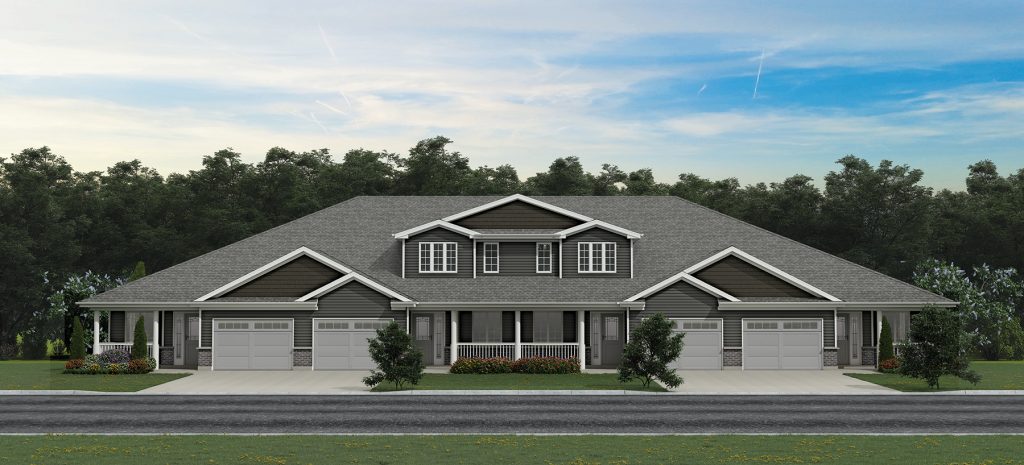
“In terms of text and timing, the Growth Plan was written for our town, with sustainability top of mind. It is reshaping how we think,” says Herron. “Social and environmental considerations direct our plans for a complete and fully integrated community, from cottages to multi-units to single family homes, and we’re working with our neighbouring municipalities to develop a connected trail system tied to the Georgian Trail and the Georgian Bay Waterfront Trail.”
We’re in discussions with developers about our Downtown Node, which could include a 50-unit condo on the river, a retirement home and long-term care home. And this spring, we will be issuing an RFP (request for proposal) to developers to see what they will offer regarding Beach One, paying special attention to our issue of rising lake levels and where it’s safe to build. For us, it’s all about the development of a complete community.
Doug Herron,
Town of Wasaga Beach
A case in point is a development to the east of Wasaga Beach’s Downtown Node, where a new arena and a new, larger library will be situated in the same location. “Although the majority of our population is 50-plus, we want to bring in more families into our town,” says Herron. “We are modernizing and continually coming up with programs that are best for our residents. A new library and a new arena will offer social gathering places for young and older alike.”
On the new development front, Herron provides an update on new and existing projects and the town’s grand Downtown Master Plan. “Four years ago, 90 per cent of our housing was single family homes. Now we have a strong swing to a variety of units,” he says. “We’re in discussions with developers about our Downtown Node, which could include a 50-unit condo on the river, a retirement home and long-term care home. And this spring, we will be issuing an RFP (request for proposal) to developers to see what they will offer regarding Beach One, paying special attention to our issue of rising lake levels and where it’s safe to build. For us, it’s all about the development of a complete community.”
One notable development now taking shape is the Villas at Wasaga Meadows from Parkbridge Homes. Situated within the existing retirement community of Wasaga Meadows near Beach One, the project is offering 66 units ranging from 1,268 to 1,675 square feet, competitively priced at $281,914 to $345,023 (including HST).
“Because it’s a land lease arrangement where we retain ownership of the land, we are targeting the ‘missing middle’ of the market, offering a low price point that appeals to active, retired Boomers from all over (including the GTA) who want to affordably downsize,” says Kristen Wilkinson, Parkbridge’s vice-president, customer experience. “The Villas offer homeowners all the features and amenities they’re looking for and a sense of simplicity, including one-floor living, ‘lock and leave’ maintenance, enough space, and social connections. They can plug into the social networks in the larger Wasaga Meadows community.”
Clearview Township
According to Clearview’s most recent Project Input Summary, there are currently 30 residential development projects of various types in the application, approval or construction stages, representing the largest number of new units (7,270) in one of Southern Georgian Bay’s smaller municipalities.
One notable project, currently in pre-sales, is the adult lifestyle community of Simcoe Gardens in Stayner by developer Mamta Homes. Eighteen freehold townhomes, ranging from 1,200 to 2,300 square feet and priced from $390,000, will feature a wide unit footprint, high ceilings in the living room, and entrances to the backyard from the home and an attached garage.
Because we are experiencing significant growth, it is important that we maintain the small-town character and charm of our communities and provide a balance of residential growth, usually followed by commercial growth. Our new Official Plan, currently in progress, will be looking at how to address the ‘missing middle’ by encouraging or requiring developers to build more modest homes, around 1,000 to 1,500 square feet.
Mara Burton,
Clearview Township
“Ours is a unique site plan – it’s spacious, not crowded, with a real neighbourhood feel,” says Mamta president Harjinder Kang. “The common elements will feature a central gazebo area, benches, a walking trail and a unique rain garden. You can walk to shops in Stayner, and we’re only 10 minutes’ drive to Collingwood and Wasaga Beach.” He notes that the development will appeal to mature buyers – up to 70 per cent of which will likely come from neighbouring communities and the rest from the GTA.
When asked about how Clearview Township is balancing growth with sustainability, director of community services Mara Burton replies that the municipality sees itself as the keeper of communities and infrastructure long after developers have moved onto other projects, making sure that they “work” and stand the test of time financially, environmentally, and for the ongoing well-being of the community.
“The province has a number of policies and regulations which are consistent with our planning decisions. This helps to direct growth to fully-serviced settlements while protecting agricultural and heritage lands,” says Burton. “Because we are experiencing significant growth, it is important that we maintain the small-town character and charm of our communities and provide a balance of residential growth, usually followed by commercial growth.”
For Clearview Township, ‘smart development’ means ‘smart growth,’ which includes higher densities, a variety of housing options, walkable neighbourhoods (including trails) and transit. “To meet the housing demand, a variety of singles, semis and townhomes are being developed, and we permit apartments in homes,” says Burton. “Our new Official Plan, currently in progress, will be looking at how to address the ‘missing middle’ by encouraging or requiring developers to build more modest homes, around 1,000 to 1,500 square feet.”
Collingwood
As with other Southern Georgian Bay municipalities, the Town of Collingwood experienced a significant increase in development activity in 2019, with 691 building permits issued for 244 single-family homes, eight semi-detached homes, 135 townhomes and 304 apartments.
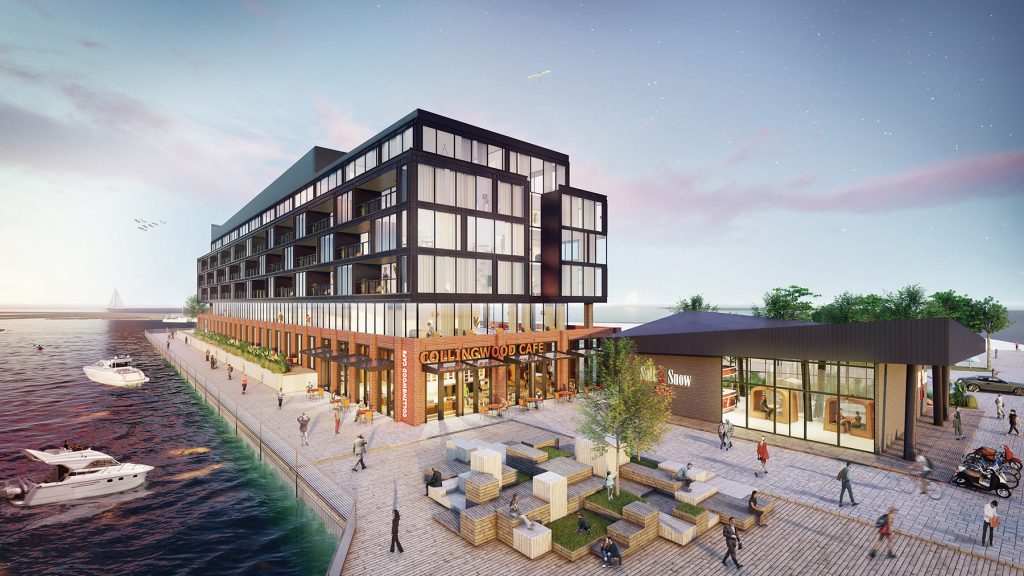
According to Collingwood’s senior planner, Mark Bryan, this breakdown continues a trend seen over the past years towards fewer single-family homes. As examples, Bryan cites three new developments currently under review: Blue Fairway Phases 5 and 6, consisting of 257 units (apartment buildings and townhomes); Wyldewood Creek (168 condominium apartments); and Panorama North, comprising 756 units including 122 singles, 588 townhomes, 219 apartments, an elementary school block and a park.
Essentially, the Growth Plan lays out a framework for creating a more liveable, compact, and complete urban structure with good design and built form that supports economic and environmental benefits, including protection of the natural environment from the impacts of growth, while providing amenities for residents and visitors alike. Our planning policies are supportive of sustainable building, meaning density and intensification targets, complete communities and compact urban form.
Mark Bryan,
Town of Collingwood
Meanwhile, The Shipyards will be releasing its final phase, Collingwood Quay, in the spring of 2021. This will be a modern six-storey, 85-unit condominium building on the harbour, featuring one- and two-bedroom suites with unobstructed water views, contemporary finishes with a “Scandinavian flair,” ground-floor retail shops and generous amenities. “Collingwood Quay condos will correspond with the insatiable appetite for living in the core of Collingwood, on the water,” says Shipyards sales representative Tara Parsons, noting that the complex currently has a population of 230-300, with the likelihood of growing to 500 in the future.
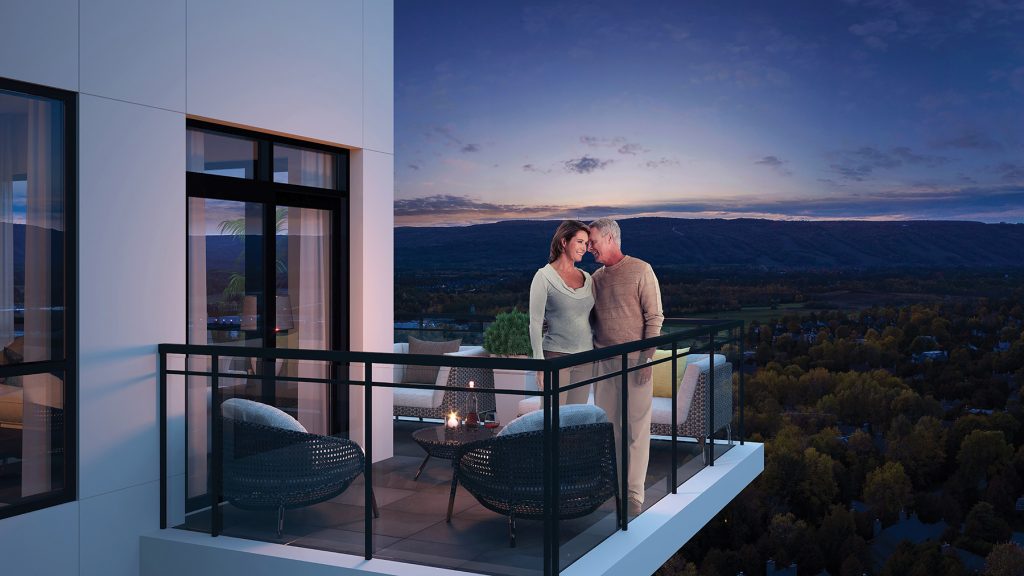
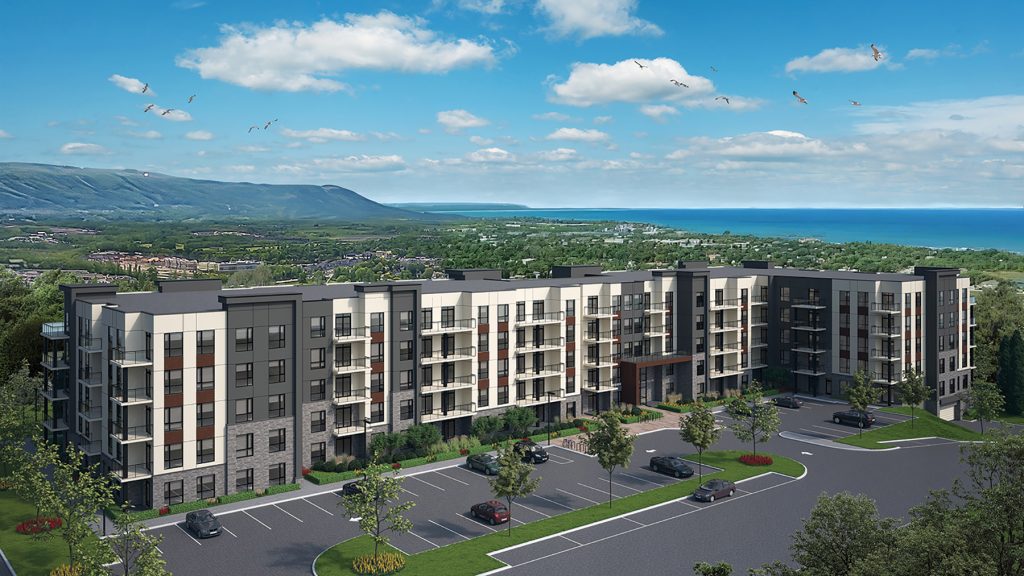
“Our clients are people 55-plus who are downsizing and looking for a walkability lifestyle close to downtown and the Farmers’ Market. And we continue to see multi-generational purchases – parents investing in a property that accommodates their extended family’s full spectrum of year-round needs.”
Another multi-unit complex is taking shape in Collingwood’s Balmoral Village community. Royal Windsor, from developer Sherwood Homes, is a five-storey, 132-unit condominium featuring one and two-bedroom suites ranging from 660 to 1,900 square feet, priced from $350,000 to $900,000. It is currently in sales, with the grand opening of its showroom scheduled for March 7.
“Royal Windsor is a project designed to appeal to people in their 50s and 60s wishing to downsize for the right size,” says sales and marketing manager Jennifer Muller. “They’re looking for all the comforts of home – space, good design, storage, walk-in closets – while taking advantage of the four-season lifestyle they desire in a great, high-demand destination,” says Muller. “Our suites are curated to complement lifestyles and, for those who need it, we have quite a few barrier-free units available.”
How is Collingwood balancing its demand for housing and growth with sustainability? Senior planner Mark Bryan answers the question as follows: “Collingwood has been identified on the provincial Growth Plan as a Primary Settlement Area with policies to support the creation of complete urban communities. Essentially, the Growth Plan lays out a framework for creating a more liveable, compact, and complete urban structure with good design and built form that supports economic and environmental benefits, including protection of the natural environment from the impacts of growth, while providing amenities for residents and visitors alike.
“Our planning policies are supportive of sustainable building, meaning density and intensification targets, complete communities and compact urban form. The town’s updated Official Plan will strengthen our ability to balance sustainability with growth.”
The Blue Mountains
Following a drop in 2018 from the previous year, The Blue Mountains saw substantial increases in 2019 in the number of new residential units built and total construction value, according to director of planning and development services Nathan Westendorp: 320 compared to 201 in 2018, valued at $181 million versus $161 million in the previous year.
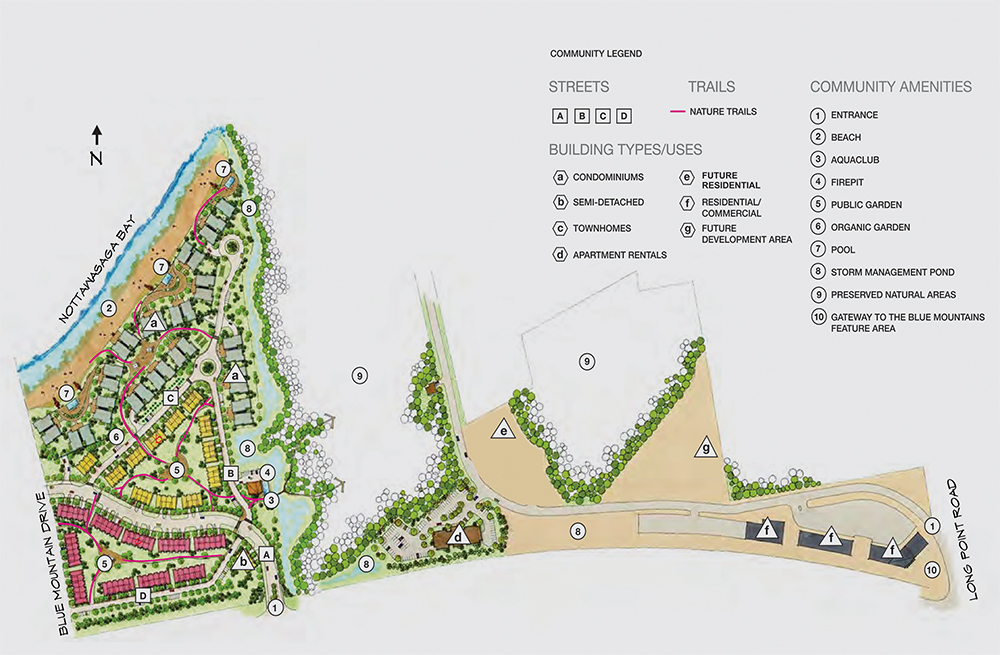
As with other municipalities, new development continues to escalate year after year, which can be an issue for some of the Town’s residents. Concerned about insufficient infrastructure and increased traffic resulting from rapid residential development growth, The Blue Mountains Ratepayers Association is pressuring council to complete a drainage plan and a transportation plan as integral components of the town’s overall Strategic Plan. Without these, the group would like to see a moratorium placed on future development proposals.
With high development activity, primarily in the areas of Craigleith, Blue Mountain and Lora Bay, we identified as a primary focus the need to be completely transparent, engage with the
Nathan Westendorp,
community and keep people continually informed about the status of projects. This includes access to complete information on our website, including staff reports, public documents and the latest plans. We are coordinating efforts across town departments to make sure that we are not overextending ourselves with respect to services and infrastructure.
Town of The Blue Mountains
“Growth continues to be a hot topic,” says Westendorp. “With relatively high development activity, primarily in the areas of Craigleith, Blue Mountain and Lora Bay, the town identified as a primary focus the need to be completely transparent, engage with the community and keep people continually informed about the status of projects. This includes access to complete information on our website, including staff reports, public documents and the latest plans.”
Balancing demand with sustainability (environmental, social and financial) is a vital component of the Official Plan, Westendorp adds. “The market remains strong, and we have enough supply, with a lot of properties available and a future growth reserve (in secondary plan areas) as identified in the Plan. And we are coordinating efforts across town departments to make sure that we are not overextending ourselves with respect to services and infrastructure,” he notes.
“The final piece of the puzzle is attainable housing. We have purchased the site of the former Foodland building in Thornbury. We are now completing initial studies and will move forward with initial public consultations, asking residents what they would like to see on the property.” says Westendorp. “In addition to this site, council would also like to see attainable housing in the Craigleith area.”
Speaking of Craigleith, The Blue Mountains has granted draft plan approval to Aquavil, a 63-acre waterfront development from Royalton Homes. Characterized by Westendorp as “a strong project in a designated settlement area with the potential to be a catalyst for the town,” the development will include an estimated 340 residential units, ranging from townhomes to semi-detached homes and condominiums on the water, along with a 6,500 square-foot clubhouse and 27 acres of natural forest with trails and benches.
“It’s a master community for everyone,” says Royalton co-owner Samer Chaaya. “Our vision was to create a resort-style community that’s different from standard subdivisions in blocks. Aquavil will feature clusters of residences with green spaces in behind – no squares, non-linear, organic.”
Aquavil’s first phase, the west end, will include 234 units – towns, semis and bungalow-style condos – on the lake, with private terraces on the rooftop level and two waterfront pools, Chaaya adds. “Future development in the east end will include a commercial area, a restaurant and a small retail convenience store, some detached lots and other residences pending approval. We’re hoping to break ground this fall, with occupancy in 2021.”
Meaford
“We’re getting ready for a tsunami this year with the volume of new developments and approvals in the works,” says Rob Armstrong, Meaford’s chief administrative officer and director of development and environmental services, noting that there are currently approximately 2,000 units in various stages of the process.
We’re getting ready for a tsunami this year with the volume of new developments and approvals in the works. Addressing sustainability, we have completed a service structure update to our Official Plan, taken a hard look at our growth demands, and given priority to redevelopments and intensifications of existing properties. Over the next years, we plan to continue servicing upgrades and add attainable housing, a long-term care home and visitor accommodations to our portfolio.
Rob Armstrong,
Municipality of Meaford
According to Armstrong, the municipality is currently working with purchasers and developers on several projects: the former Stanley Knight waterfront site including residential and accommodation units; approximately 200 downtown attainable singles and towns priced from the mid-$200,000s to the low $300,000s; a 40-unit life lease condo project at the Meaford Golf Club, a five-storey condominium on Collingwood Street; and what could be the mother of all developments in Southern Georgian Bay – a proposed 1,500-unit project on four hundred acres of land west of Christie Beach Rd. from Parkbridge Lifestyle Communities.
“Right now, we have significant demand for housing, with limited supply,” says Armstrong. “Lots of people are looking to downsize here, but there’s not much available. Addressing sustainability, we have completed a service structure update to our Official Plan, taken a hard look at our growth demands, and given priority to redevelopments and intensifications of existing properties. Over the next years, we plan to continue servicing upgrades and add attainable housing, a long-term care home and visitor accommodations to our portfolio.”
Armstrong adds that, while retirees are still the primary purchasers of new housing in Meaford, young families and entrepreneurs continue to be attracted by the town’s amenities and affordability, along with the construction of the new “superschool” (scheduled for completion in 2021) and a new library (to be completed this summer or early fall.)
Grey Highlands
South of Meaford and The Blue Mountains, the mostly rural Municipality of Grey Highlands is experiencing considerably less growth from a development perspective than other municipalities, with the majority centred in its primary “settlement areas” of Markdale and Flesherton. Here, new developments are restricted to infilling projects.
Director of planning and building services Michael Benner reports two major residential projects in Markdale: Devonlea Homes – a 300-unit project consisting of townhomes and single-family homes; and Markdale Highlands – 55 townhomes in phase one and another 52 townhomes plus an apartment building in phase two. In addition to residences, a new hospital and a replacement school are planned.
As to future building, Benner anticipates slow and steady growth over the next years. “Demand for new homes is fairly healthy,” he says. “Right now, developers are testing the market.”
Owen Sound
Situated on the western end of our region, Owen Sound is experiencing its own development boom. Total building permits for residential units issued in 2019 amounted to 145 compared to only 37 in the previous year, and construction values in 2019 were up 48 per cent over the previous year at almost $47 million – the city’s second-best year ever.
“The time for Owen Sound is now,” says Pam Coulter, director of community services. “We’re a great community from a service perspective, with jobs, relatively affordable housing, lifestyle options, a hospital, Georgian College (which will soon be offering a degree nursing program), recreation centres and art galleries. “As to managing our growth, we have a positive environmental program and a focus on hard infrastructure, such as storm water management, sidewalks and bicycle lanes. And our wastewater and drinking water capabilities are only at 50 per cent capacity.”
The time for Owen Sound is now. We’re a great community from a service perspective, with jobs, relatively affordable housing, lifestyle options, a hospital, Georgian College, recreation centres and art galleries. As to managing our growth, we have a positive environmental program and a focus on hard infrastructure, such as storm water management, sidewalks and bicycle lanes. And our wastewater and drinking water capabilities are only at 50 per cent capacity.
Pam Coulter,
City of Owen Sound
Is Southern Georgian Bay’s explosion of new residential developments due solely to the growing popularity of our region, or are province-wide economic factors coming into play? The recent Housing Market Outlook for Ontario by the Canada Mortgage and Housing Corporation (CMHC), reports that many builders in the province virtually stopped construction in 2017 and 2018 because of the Mortgage Stress Test rules.
Development activity stabilized and began to improve last year and is forecast to rebound in activity in 2020 and 2021, primarily due to continued low interest rates and the steady growth of Ontario’s population. And the number of multi-unit residential buildings is forecast to be double that of single-family homes.
Change is inevitable. With increasing residential development and a greater variety of housing, Southern Georgian Bay is poised for dramatic growth, which will alter the region’s populations, housing mix, traffic, services and ultimately its character. Fortunately, public input and vigilance are keeping our respective municipalities on their toes, with plans and procedures in place to ensure sustainable growth for the future. ❧











